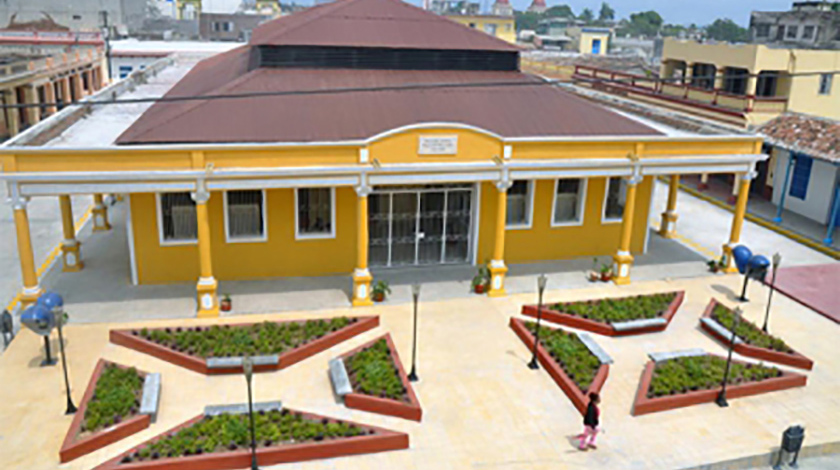Plaza de la Marqueta: a cultural treasure in the city of Holguín
- Written by ACN
- Published in Holguin
- Hits: 1453

For passers-by in the city of Holguín, Plaza de la Marqueta is a daily scene within the center of the eastern city, as a space linked to the history and cultural traditions of the eastern Cuban region.
Built in 1848, in order to commercialize objects, goods and services, it was the first market of the former Hato de San Isidoro, according to the architectural provisions drawn up by the Laws of the Indies for the buildings and squares of the Spanish colonies of the time.
Originally, this area was made up of wooden and tile stalls for the sale of meats, viands, vegetables, coffee, and also had small businesses inside such as hardware stores, handicraft stores, dentists' cabinets, and hotels.
To this day, the exterior galleries supported by concrete columns are preserved, which have survived the passage of time and weather phenomena that make the square a perennial memory of the 19th century.
After a capital repair in 2017, with an amount exceeding 80 thousand pesos and as part of the programs for the recovery and maintenance of heritage properties, the place retakes part of its original function and stands as a symbol of the local culture.
Currently, La Marqueta is a stage for the sale of ornamental plants, handicrafts, various items, as well as the presentation of cultural and commercial groups under the design of one of the most comprehensive local projects in the province of Holguín.
Within its surroundings, there are also cultural institutions such as the Engraving Workshop, the Casa Marco House of the Cultural Property Fund, the Lugones Printing House and the Pedro Ortiz Literary Promoter, whose main purpose is to preserve the cultural and literary roots of a city with more 300 years of history.
In the 21st century, when Holguín became one of the greatest attractions for city tourism in eastern Cuba, this space continues to be a meeting point for the local works that distinguished San Isidoro, now enriched with current traditions.
